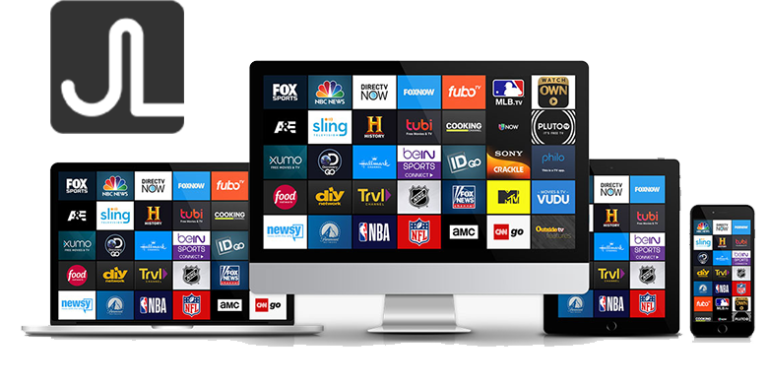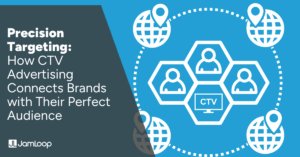
We know cord cutting is on the rise as more people move away from traditional cable and satellite and over to exclusively using streaming services. According to a recent cord-cutting study conducted by Roku, people are cord-cutting at a significantly faster rate than ever before. There is a wide selection of streaming services available these days, some of which are subscription-based (SVOD) but many of which are free ad-supported services (AVOD). Streaming services like Sling, Philo, Hulu, FuboTV, Pluto tv, Plex, Crackle, Tubi and XUMO each pack a rich portfolio of professional television and movie content supported, in part, by advertising that looks and feels exactly like traditional television advertising — it truly is the “new, free” TV experience.
Similarly, the method by which marketers reach television audiences is also shifting to a streaming-centric approach. Marketers tasked with delivering a return on investment for their clients’ advertising spend must now consider the benefits of running Connected TV (CTV) campaigns in parallel with and, increasingly, in lieu of linear TV campaigns. “Fully 60% of OTT and connected TV (CTV) ad dollars will come from linear TV budgets this year”, according to a November 2020 poll by the IAB of US agencies and brand marketers with digital video in their 2021 media budgets.
Part of that shift boils down to agencies calculating the effective cost (eCPM) of running CTV instead of traditional linear cable or satellite TV advertising. Here we examine the benefits of advertising on CTV/OTT and why it is usually worth the rates.
The Ads Are Not Skippable
One of the most significant benefits of CTV advertising is that viewers generally cannot skip the ads. Most people who still watch traditional broadcast TV have some sort of on-demand option for it, like a DVR, which usually allows them to fast forward through the commercial breaks, so your ads are often being skipped and ignored. With CTV advertising, viewers cannot fast forward through them, so your audience has to watch them to get to the next part of their show. This manifests itself in the high measurable performance of CTV ads, showing an average CVR (Completed View Rate) of at least 95%, which means that at least 95% of the ads viewed by consumers were viewed to completion. The non-skippable nature, coupled with digital targeting tactics now available in CTV, means your ad is likely being watched by people who may actually be interested in your product or service and are, therefore, more likely to buy it.
CTV Offers Audience Targeting
The advanced CTV targeting capabilities alone make it worth the rates and investment. CTV takes the guessing game out of television advertising, especially if you are using a programmatic CTV/OTT advertising platform for buying your CTV ads.
With traditional TV advertising, there is a lot of guesswork. You aim for specific channels or shows that “over-index” for your target audience but there are still a lot of people who are not interested in your product and are tuning out your ads. It can be a wasteful way of spending your advertising budget. By contrast, CTV advertising leverages impression-level data to select households with specific demographics, demonstrated interests or historical purchasing behaviors to narrow down the target audience. This approach is more pinpointed and, if deployed correctly, will result in less waste in ad spend. For a simple example, if a traditional linear TV CPM is $25 tries to reach a particular demographic but only reaches 60% of its intended audience (because it has no way to identify the value of individual ad impressions and exclude impressions that don’t match the target demo), this translates to a $41.6 effective CPM; by contrast, if a CTV campaign costing $30 CPM is delivered 100% in-demo (because it can execute on impression-level demo targeting and reporting), the $30 eCPM is significantly cheaper than the linear TV campaign. Any good programmatic buying platform will be able to provide the impression-level detail to verify the delivery of in-demo impressions in real-time (and if they don’t, you probably shouldn’t be using the platform vendor).
Multichannel Marketing
Do you ever notice how ads seem to follow you around as you are searching and surfing on the internet? You visit a website and look at a pair of shoes; then you see those shoes in a newsfeed on your news app, then in a sidebar ad when on a sports app, and then that brand’s commercial pops up when you are watching something on an ad-supported streaming service? This is a common marketing tactic these days because it is often successful. Marketers can set up CTV campaigns to leverage consumer data to maximize the relevance of their ad campaigns. How do they do this? The best CTV/OTT advertising platforms have integrated partnerships with CTV-centric data vendors who collect rich audience data across millions of historical digital consumer usage & behaviors and tie this data back to user profiles on any digital device on an anonymous basis. This means that consumers who have demonstrated content consumption or purchasing behaviors on, say, a laptop or smartphone can also be reached on the big screen TV. Yes, the privacy landscape is constantly changing to manage the collection and distribution of this consumer data but the reality is that the advertising industry will always have some mechanism to deliver targeted ads across any digital device. Targeted CTV advertising is simply the latest iteration of that process.
Analytics Data
When you advertise on traditional cable TV, it is almost impossible to track the effectiveness of your ad campaigns. Sure, you can run “brand lift” studies and you can use “panel-based” methodologies to estimate campaign reach and frequency but these methods are fuzzy and not based on individual delivered ad impressions. With CTV advertising, you get real-time data based on actual delivered & tracked ad impressions — your platform provider should have this information at their and your fingertips (again, if they don’t, you shouldn’t be working with them) — allowing you to measure campaign performance in real-time and giving you the option to make mid-campaign tweaks to optimize your campaign success.
TV Vs. CTV Advertising Rates
When you advertise with CTV, rates are based on the number of times an ad is actually seen (i.e. ad impressions). It shouldn’t matter if your ad runs during traditional “primetime” or not, a consumer watching an ad at 11:30 pm on the Discovery Channel streaming app is just as valid as a consumer watching an ad at 6 pm on Discovery Channel via the cable box. It’s largely the same content with different access points. The difference is that, with CTV/OTT, the ad impressions and audience reach are truly measurable. Strong measurability, coupled with granular targeting and real-time reporting for every single impression, are all reasons why the effective CPM is often lower for CTV than for traditional linear TV advertising. Moreover, the low-to-no minimum costs for advertisers to try a CTV campaign encourages smaller, local advertisers to give it a try and find success in this new and flourishing advertising medium.
It is easy to get started
Send us an RFP, and your dedicated JamLoop account manager won’t skip a beat. We’ll get right back to you with a customized media plan.
"*" indicates required fields

This DSP Sees a Future with
local streaming advertisers
JamLoop Founder and CEO Leif Welch featured as best vendor for indie agencies and SMBs.




